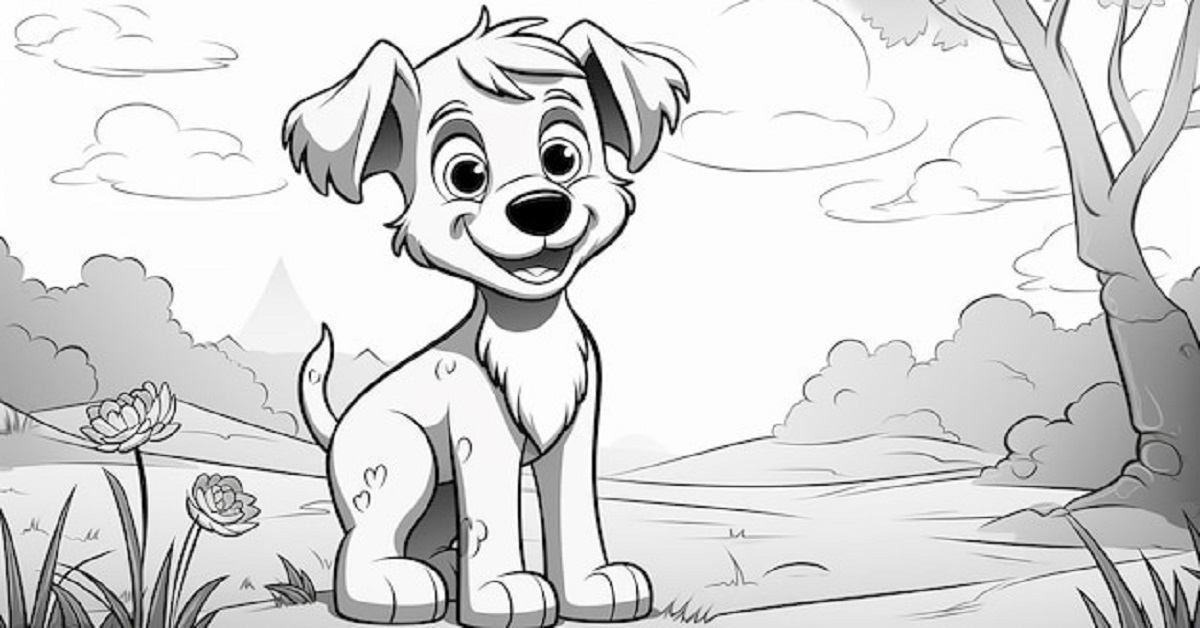Drawing Dogs: A Step-by-Step Guide
Drawing dogs can be a delightful and rewarding hobby, whether you’re an aspiring artist or just love canines. In this comprehensive guide, we’ll walk you through the process of drawing dogs, from understanding their anatomy to adding the finishing touches that make your artwork come alive.
Materials Needed for Drawing Dogs
Basic Tools for Beginners
To start drawing dogs, you don’t need a lot of fancy equipment. Here are the essentials:
- Pencils: A range of pencils from 2H to 6B will give you the variety of hardness needed for different shading techniques.
- Erasers: A kneaded eraser for lightening areas and a rubber eraser for clean lines.
- Paper: Quality drawing paper that can handle erasing and shading.
- Sharpener: A good pencil sharpener to keep your tools in top condition.
Advanced Tools for Professionals
If you’re looking to take your drawings to the next level, consider these advanced tools:
- Mechanical Pencils: For precise lines and detailed work.
- Blending Stumps: To smooth out shading and create gradients.
- Colored Pencils or Markers: To add color to your drawings.
- Drawing Tablet: For those who prefer digital drawing.
Understanding Dog Anatomy
Basic Structure of a Dog’s Body
To draw dogs accurately, you need to understand their anatomy. Dogs have a basic skeletal structure similar to other quadrupeds, with some variations depending on the breed. Start by studying the major bone structures: the skull, spine, ribcage, and limbs.
Differences Among Various Breeds
Different breeds have distinctive shapes and proportions. For instance, a Greyhound has a slender, aerodynamic body, while a Bulldog is stocky and muscular. Knowing these differences will help you capture the essence of each breed.
Starting with Simple Shapes
Breaking Down the Dog into Simple Shapes
Begin your drawing by breaking down the dog into basic shapes like circles, ovals, and rectangles. This helps in getting the proportions right and lays a solid foundation for your detailed work.
Importance of Getting the Proportions Right
Correct proportions are crucial for a realistic drawing. Spend time on this step to ensure that the head, body, and limbs are in the right scale relative to each other.
Drawing the Dog’s Head
Sketching the Basic Shape of the Head
Start with an oval or circle to represent the head. Add guidelines to indicate the placement of the eyes, nose, and mouth.
Adding Details to the Face
Draw the eyes, nose, and mouth in more detail. Pay attention to the unique features of the breed you’re drawing, like the size and shape of the ears or the length of the snout.
Drawing the Dog’s Body
Outlining the Torso
Using simple shapes, outline the torso. An elongated oval works well for most breeds, with adjustments for specific breeds’ characteristics.
Adding the Legs and Paws
Attach the legs to the body, ensuring they are proportionate. Pay attention to the joints and the way the legs bend. Draw the paws with care, noting the number of toes and the shape of each pad.
Focusing on Details
Drawing the Eyes
Eyes are crucial for capturing the dog’s expression. Draw them with care, showing the pupil, iris, and reflections to make them look lifelike.
Capturing the Expression
Expressions vary greatly among dogs. Whether your dog looks happy, sad, or curious, use subtle changes in the eyes and mouth to convey emotion.
Detailing the Fur
Fur texture adds realism to your drawing. Use short, quick strokes for short fur and longer, flowing lines for long fur.
Shading and Texture
Basic Shading Techniques
Shading gives your drawing depth. Start with light pressure and build up layers to create darker areas. Use blending stumps to smooth transitions.
Creating Texture for the Fur
Vary your strokes to mimic the fur’s texture. For example, draw overlapping lines to create the appearance of dense fur.
Drawing Different Breeds
Characteristics of Popular Dog Breeds
Different breeds have unique features. Study the physical characteristics of breeds like Labrador Retrievers, Poodles, and German Shepherds to draw them accurately.
Adapting Techniques for Different Breeds
Adjust your drawing techniques based on the breed. For instance, draw tighter curls for a Poodle’s fur and sleek, smooth lines for a Doberman.
Common Mistakes to Avoid
Proportion Errors
Avoid common mistakes like making the head too large or the legs too short. Regularly step back from your drawing to check proportions.
Overcomplicating the Drawing
Keep your drawing simple, especially when starting. Too many details can overwhelm and make the drawing look cluttered.
Tips for Improving Your Dog Drawings
Practice Regularly
Like any skill, drawing improves with practice. Set aside time each day to draw and experiment with different techniques.
Study Real Dogs and Photographs
Observation is key. Spend time watching real dogs or studying photographs to understand their movements and characteristics.
Using References
Finding Good Reference Images
Choose clear, high-quality images as references. Websites, books, and personal photographs are great sources.
How to Use References Effectively
Use references to understand details but avoid copying them exactly. Adapt the reference to fit your drawing style and vision.
Adding Backgrounds
Simple Backgrounds to Enhance Your Drawing
A simple background can enhance your drawing. Consider adding grass, a park scene, or a cozy indoor setting.
Integrating the Dog into the Scene
Ensure the background complements the dog and doesn’t overshadow it. Use lighter shades and simpler lines for the background.
Digital Drawing Techniques
Tools for Digital Drawing
If you prefer digital drawing, use tools like Adobe Photoshop, Procreate, or Clip Studio Paint. These programs offer a wide range of brushes and effects.
Advantages of Digital Over Traditional Drawing
Digital drawing allows for easy corrections, layering, and experimenting with colors without wasting materials.
Conclusion
Drawing dogs is a rewarding and enjoyable art form. By understanding dog anatomy, practicing regularly, and using the right tools, you can create beautiful, lifelike drawings. Remember to start with simple shapes, pay attention to proportions, and focus on details like the eyes and fur texture. Whether you prefer traditional or digital methods, keep experimenting and refining your skills. Happy drawing!


